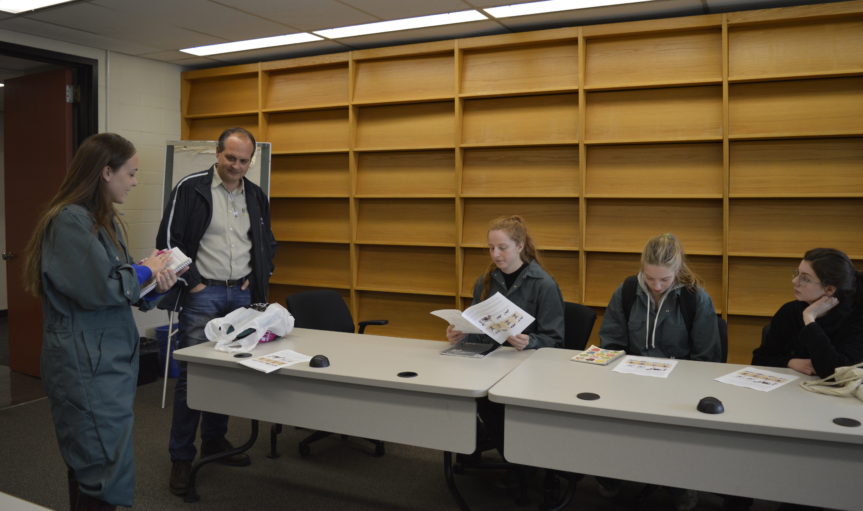“Dairy cows, are like ferraris” – Prof. Vern Osborne, Animal and Poultry Science
If you’ve ever enjoyed yogurt, cream, cheese, cream cheese, ice cream or a simple glass of milk, you can thank a dairy cow.
Weighing around one ton, the dairy cow must pump 1000 litres of blood that travels around her udder to produce 1 litre of milk for us! In a day, the average cow can produce 30 litres of delicious & nutritious milk.
In order to ensure a cow’s productivity, reproduction and health, farmers use Body Condition Scoring to measure the amount of subcutaneous fat (fat found under the skin) in a cow.
Using a 5-point scoring system, farmers look at the hooks, pins, thurls and ribs of the cow to determine her score. A score of 1 would denote an extremely thin cow, while a score of 5 tells the farmer his cow is excessively fat. Most dairy cows fall in between 2.5 and 4. The hardest part about body condition scoring is narrowing down what quarter point to give a cow (Is she a 3.25 or a 3.5?)



Once we reached the barn, everyone chose a cow to score!

We also got to witness feeding time, one cow even gave Andrea a friendly lick!

After students completed scoring their cow, our dairy expert, Vern, let students know if their scoring was accurate. Everyone’s numbers were on-point!
For their outstanding efforts, students received honorary dairy expert hats.
This spring, the University of Guelph opened a new, state-of-the-art dairy research facility in Elora that houses over 600 cows. To learn more, visit the Livestock Research and Innovation Centre’s blog and twitter!
https://eloradairyfacility.wordpress.com/
https://twitter.com/milk1elora?ref_src=twsrc%5Etfw











You must be logged in to post a comment.